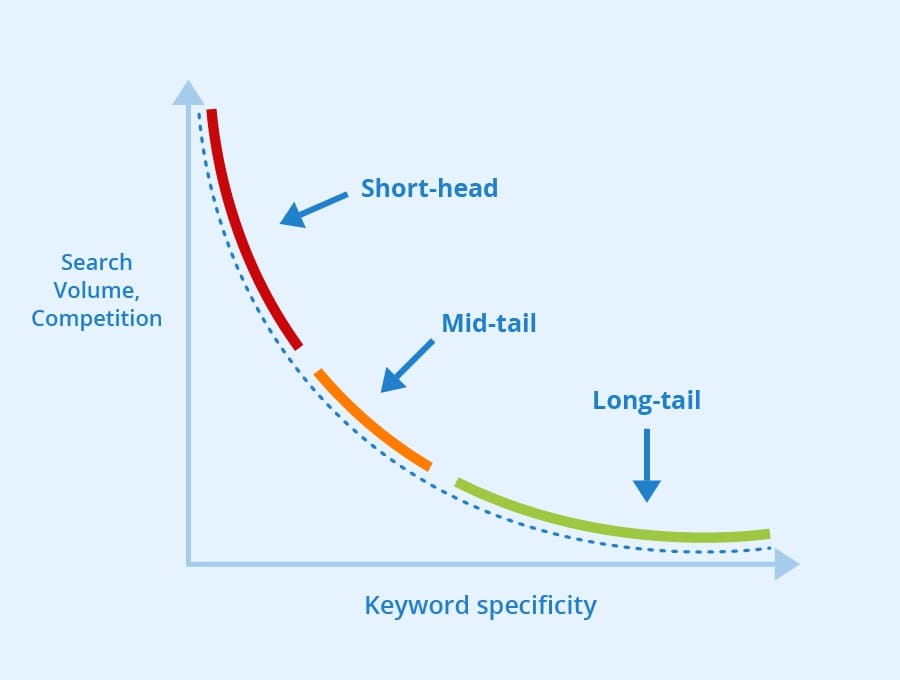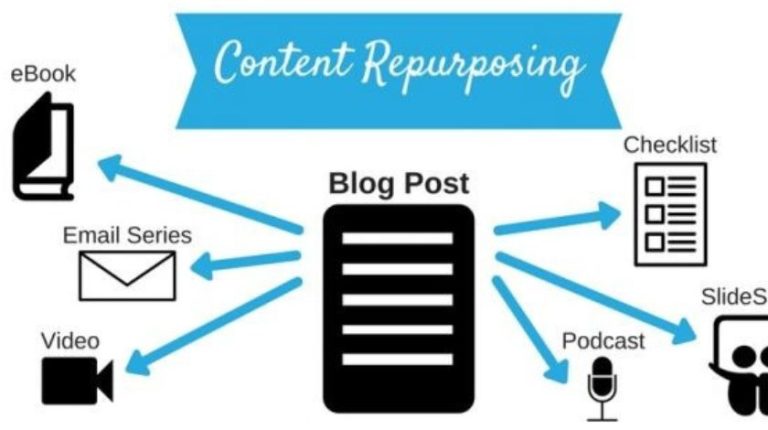How to use Long-Tail Keywords to build Short-Tail Keyword Ranking?
Keyword ranking has a major impact on directing traffic to the website, generating leads, and converting. More often, your webpage gets displayed on the first page of SERPs. It’s better as you’ll add up new visitors to your website.
In fact, HubSpot reports that 75% of searchers never pass through the first page of the search result. Appearing on the first page will undoubtedly increase the traffic to your website.
But the problem arises when the webpage isn’t displayed on the first page of SERPs. Most site owner questions- How to rank a webpage for the targeted short-tail keywords?
Yes, it’s definitely difficult for SEO to rank the targeted keywords when there is high competition, but it’s not impossible. By doing proper keyword research and using some tricks, you can rank for short-term keywords, but this will take time.
Ranking for the desired keywords gets more difficult when you’re a relatively new or low-authority website. And difficulty level increases when you aim to rank for the high-volume, short-tail keyword phrases.
Let’s give a push to this matter and focus on understanding keywords. When you read this article, you’ll learn tactics to rank for the short-tail keywords.
Major 4 factors to consider while doing keyword research
Keyword ranking depends on how well you do keyword research. There are tools available to conduct keyword research. The data you retrieve from the research can assist you in determining which keywords are suitable to rank.
Below are the 4 factors which you need to consider while doing research.
1. Search volume
Search volume is the potential visitors you can obtain. In other words, search volume is the average monthly search made for particular words or phrases.
You can know the targeted keywords’ search volume from tools such as Ahrefs and SEMrush.
Targeting high search volume keywords will bring traffic to your website. But these keywords have high competition, which can decrease the visibility of your webpage.
This means your page may or may not appear on the SERPs, depending on the competitiveness of the keywords.
However, search volume can also fluctuate because of seasonal factors. Some keywords may trend for a specific month, and the same keyword may dope the search volume another month.

To give an illustration, the phrase “Wedding dress” or “Wedding flower” will have more search volume during the wedding season. Other than during the wedding season, the keywords related to the wedding will have comparatively less search volume.
2. Relevancy
Keyword relevancy is important for ranking as it can drive traffic to your website. It also determines how relevant your keywords are to each website page. Additionally, using relevant keywords in the content will define what your website is about.
Always prefer to use relevant keywords on your content, even if it doesn’t have a high search volume. Staying relevant is important to attract visitors to your website.
When your visitors enjoy reading the information in your content, they will revisit your website to read new content. So, stay relevant.
For example, let’s say you’re providing nutrition and diet service. You can use relevant keywords like “healthy diet” in your content. Remember to stay relevant to your core service, even if the keyword has high competition.
3. Competition
The higher the keyword competition, the harder it is to appear or rank in SERPs.
If you select the keywords on which your competitors have already published content, ranking on the result page is difficult.
Short-tail keywords are more difficult to rank than long-tail keywords as many contents have already been published targeting those keywords.
You can get the number of competition from Google’s SERPs.The image below displays where you can find the exact number of competitions. The number you see, 886000, is the content that optimized the keyword “pizza recipe.” Using allintitle you will know the number of “pizza recipe” content in the title tags.
In order to eliminate the competition, marketers prefer to use high search volume and low competition keywords. This can be ideal for appearing or ranking on the result page.
4. Commercial intent
Commerce intent keywords are those phrases used to motivate people to perform specific actions. These keywords are very specific and offer a high conversion rate. Some commercial intent keywords include a sale, discount, coupon, free shipping, etc.
These keywords can have a low search volume but a very strong impact. Once people come across the commercial intent keywords, there is a high probability that people will take action.
For example, Keyword “buy a phone” has a low search volume, but it shows that people are ready to make purchases.
You may only consider using commercial intent keywords when creating content to encourage people to take action. Else, you can consider using other factors while doing keyword research.
How to do ideal keyword research for ranking?
Use Tools to search the topic you want to rank for, you’ll discover hundreds and sometimes thousands of keywords. Those keywords represent different issues searchers want to know about the core topic.
When there’re so many keywords, optimizing for a single page for every keyword relevant to the topic is impossible.
So what you can do next is segment keywords into groups; each group should consist of similar keywords. Ensure every blog post has a unique page that satisfies the searcher’s needs.
Example:
Let’s say you want to rank for the pizza recipe to set a scene. When you search in Google, you’ll get millions of results. This means Google displays content with the keywords “pizza recipe” in it. If you want to see which content has optimized the keyword “Pizza recipe,” you can search- allintitle: Pizza recipe. You’ll get a more optimized search result.
If you want to use commercial intent keywords for ranking, you can prefer “download pizza recipe” so your visitors can take your recipe.
Now let’s continue identifying the ideal keywords.
Let’s assume you’ve segmented the related keywords into different groups, and you’ve drawn one short-tail keyword and other long-tail keywords from the selective group- Pizza recipe and Homemade pizza dough recipe.
And you did a search volume research for each keyword and got a result as following,
Pizza recipe= 33100 search volume
Homemade pizza dough recipe= 24000 search volume
Now you decided to do research to identify competition. So you typed allintitle: targeted keyword, and you got the result as follows,
Pizza recipe= 68300 competition
Homemade pizza dough recipe= 2160 competition
(The numbers are based on assumption. Random numbers are used to make the reader clear about the concept)
So what you do next is you need to find Keyword Effective Index (KEI). It tells you how effectively your keywords bring traffic to your website.
To calculate KEI, you need to divide the volume by competition.
i.e, KEI= (V/C)*100
Pizza recipe= 4.84% KEI
Homemade pizza dough recipe= 111.1% KEI
For this, you can use an Excel sheet to organize your keywords.
So it’s better to use keywords with a high Keyword Effective Index. Long-tail keywords usually have high KEI and short-tail keywords typically have less KEI because of competition.
To avoid completion, many prefer to use long-tail keywords. But you can optimize short-tail keywords too.
Don’t avoid short-tail keywords.
Many people prefer to ignore short-tail keywords as it’s too competitive and very difficult to rank. Yes, these are valid points. But the key is not to concentrate exactly on short-tail keywords but to use long-tail keywords to build relevance for the short-tail keywords so they can get ranked.
Keyword ranking for shot-tail keywords is possible when you do proper keyword research and use tactics to optimize it.
Continuing the same example of a pizza recipe and homemade pizza dough recipe. You can easily rank “homemade pizza dough recipe,” but you can rank “pizza recipe,” too. Actually, they can be optimized together.
How?
When you write content for long-tail keywords, “Homemade pizza dough recipe,” you’ll describe every necessary step required to make pizza dough at home. And while writing content for a short-tail keyword, “Pizza recipe,” you’ll talk about the steps to make pizza.
So when people read your content with a keyword, “Homemade pizza dough recipe,” they would want to know how to make pizza.
So what you can do is you can add a link to “Pizza recipe” on “Homemade pizza dough recipe.” In this way, you can optimize short-tail keywords and improve keyword ranking.
Patience is a key to keyword ranking.
Optimizing many long-tail keywords won’t get massive attention to your short-tail keyword content. You need to build authority on the page. Without a good range of authority, you won’t be able to rank for shot-tail keywords, even if you optimize it extremely well.
Working to optimize for all the long-tail keywords can help you build authority. Get those pages to rank to build authority for your website.
And the amazing thing is that while you optimize long-tail keywords, you’ll receive great traffic for short-tail keywords. However, long-tail keywords have less search volume and can add up to 50 to 100 percent of traffic to short-tail keywords. This is one of the reasons why long-tail keywords and short-tail keywords are important for your strategy.







